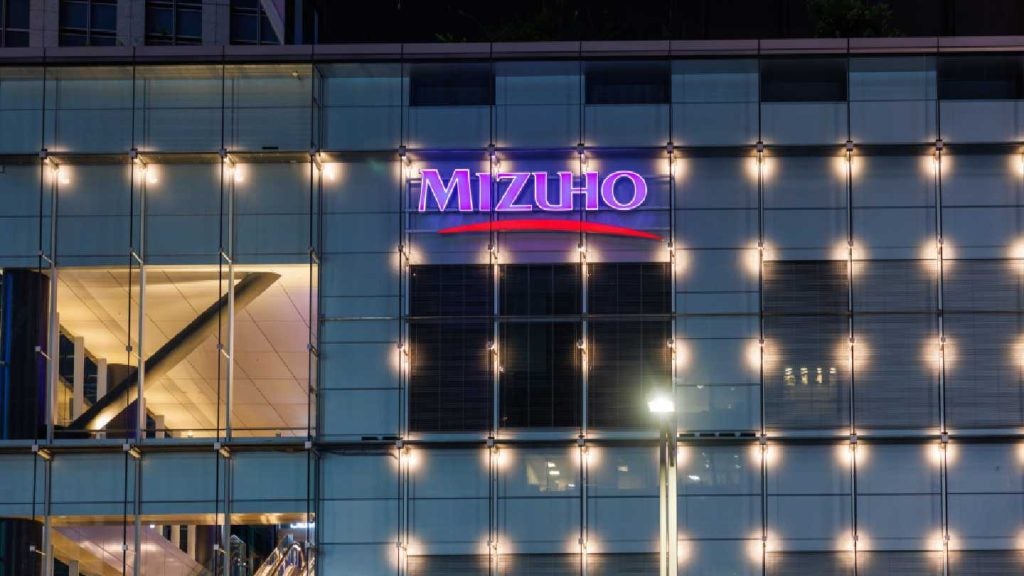Discussion on the merits of
active and passive investment is frequently couched in terms of
‘either or’. As the debate matures, however, it is becoming clear
that these investment strategies are not mutually exclusive. Paul
Golden speaks to experts on both sides of the
discussion.

Access deeper industry intelligence
Experience unmatched clarity with a single platform that combines unique data, AI, and human expertise.
 The past
The past
eight years have been characterised by market extremes, ranging
from the bull market of 2003-2006 to the volatile bear market of
late 2008.
Such extremes inevitably affect
sentiment towards passive and active investment, yet analysis of
funds over a much longer timeframe indicates how the decision to
favour one strategy over the other is not always clear-cut.
Last year, FundQuest (part of BNP
Paribas) issued a report based on analysis of active and passive
management across more than 30,000 mutual funds over a 30-year
period to 28 February 2010.
Of the 73 categories covered in the
study, it recommended a bias to active management in 23 categories,
a bias to passive management in 22 categories and deemed 28
categories to be neutral (no bias) (See chart below).

US Tariffs are shifting - will you react or anticipate?
Don’t let policy changes catch you off guard. Stay proactive with real-time data and expert analysis.
By GlobalDataOn average – and before adjusting
for risk – active managers were found to have generated positive
excess returns in bear markets and negative excess returns in bull
markets.
However, the situation reverses
after adjusting for risk, as active managers in general have
generated higher risk adjusted returns than their passive
benchmarks in bull markets and lower risk adjusted returns than
their benchmarks in bear markets.
Index-beating managers: a
rare breed
Ben Johnson, director of European
ETF research at Morningstar, points out that larger, deeper markets
(such as large capital equities) tend to be more efficient and
that, as developing markets become more efficient, it will become
increasingly difficult to add value.
He also observes that there are
some obstacles inherent to certain markets that also need to be
taken into account and suggests that many investors are unaware
that their active manager might be a closet indexer, adding
awareness to the mix.
Investor behaviour is another
factor.
“In the same way that most people
would consider themselves above-average drivers even though that is
not statistically possible, investors tend to think they are
above-average investors and would rather go down the active route
and hold out the hope of outperforming the index and being one of
the lucky few,” Johnson says.
More active managers, less
reward
As you add more active managers to
a portfolio, your chances of beating the market recede further, he
continues.
“A very small percentage of active
managers are capable of beating the market consistently and by
virtue of skill rather than chance,” he says.
“They are out there, but they are
few and far between. In addition, it is hard to spot them early in
their career and it is not always the same managers who are
outperforming.”
The distinction between passive and
active is becoming blurred, he adds.
“Ultimately there will be a balance
because the more money that is indexed, the more opportunities
there will be for active managers to add value by exploiting
mispricing in securities. As the active managers pile into this
market, the potential returns will fall and the market will swing
again.”

Does the data provide
insight?
The passive versus active argument
is best informed by looking at the data, says Nick Blake, head of
retail sales at Vanguard Investments UK.
“This [data] shows that active
investment can add value, but also, that it is very difficult to
identify those managers who will deliver consistent outperformance.
The main hurdle to overcome is cost – often an index beating return
is dragged below the index after costs.” says Blake.
“Investors should ask themselves if
they are able to identify good alpha managers who will deliver
consistent above-index returns after costs or buy the index return
at low cost and beat the majority of active managers.”
He claims it is a common
misconception that indexing only works in efficient markets.
“Some would argue that the winners
can win more in inefficient markets, but of course the losers can
also lose more. It is also the case that funds in these markets
tend to cost more, offsetting potentially higher gains.”
Rising expense ratios in
Europe
Blake refers to a number of studies
by Lipper that question why expense ratios (a measurement of the
total costs associated with operating an investment fund) continue
to rise in Europe despite assets under management increasing and
suggests European fund management is unique in being a business
where price per unit increases with volume.
He believes interest in exchange
traded funds (ETFs) will continue to grow, driven by demand for
low-cost solutions and the effects of the Retail Distribution
Review (RDR), which was launched by the FSA in 2006 and whose rules
will come into effect in the UK at the end of next year.
“The RDR should open up access to
more ‘no-load’ products to investors, advised by service advisers
no longer driven by embedded product commissions,” says Blake.
JP Loveland, principal partner at
Hanover de Broke, a financial advisory business for high net worth
individuals, says that as financial planning becomes ever more
sophisticated, many see ETFs playing a key role as investors seek
to separate alpha (the excess performance generated by making
active investment decisions) and beta (the basic market return) in
their portfolios.
The rising role of
ETFs
He adds that ETFs, which have
established themselves as a cheap and liquid way of achieving beta
and as a low-cost passive core to portfolios, can provide cheap
beta from larger markets and free up investors to seek out active
managers who genuinely add value.
“If investors have core funds where
they believe managers can perform, ETFs can also serve as satellite
plays to express particular sector or geographical bets,” says
Loveland.
Managers look set to reveal share
classes that – net of the banned trail commission – are cheaper
than the previous fund, adds Blake, who says RDR-driven
transparency is throwing a sharp light on high fund costs.
“Given that costs are a significant
determinant of eventual returns, anything that brings down
investing costs on active or passive is good news for investors,”
says Blake.
This should help close the gap
between the UK and the US, where adoption of index mutual funds and
ETFs is well established and price competition is driving more
product and index innovation, he continues.
“For retail investors, price
competition, regulation and distribution changes are only now
starting to drive index product adoption in Europe. Institutional
index investing has been more readily adopted thus far, led by
large pension plans and sovereign wealth funds,” Blake adds.
Index management on the
rise
Active management will dominate for
the next few years, concludes Blake, but index management will see
the biggest rise in percentage growth.
“Many practices are successfully
combining active and passive strategies, notably using passive to
secure the client’s key goals and active where spare capital or
risk budgets allow,” he says.
iShares Europe’s David Bower says
his company is seeing investors constructing portfolios using both
active and passive management, although he suggests index
management is a more accurate term for the latter strategy.
“A material proportion of
institutional assets are now run using index management, whereas
the retail marketplace uses index management less extensively –
although retail investors are adopting it and we expect this growth
to continue,” says Bower.
“While the perceived wisdom is that
it is easier to find mispricing of risk in less efficient markets,
the index approach is suitable in just about all asset classes
depending on an investor’s objectives.”
He also suggests it is rather
simplistic to suggest there is an issue with index huggers given
that the majority of investors structure portfolios with asset
class models that use the historic risk/return characteristics of
an index performance.
This leads them to want exposure to
the risk of an asset class (represented by an index), albeit with
an active strategy to deliver outperformance.
UK RDR not likely to drive
down active costs
Bower also warns that it is not a
given that the RDR will drive down active management costs.
“In terms of fees, you will see
commission being stripped out of the annual management charge for
new business, though we still wait for final policy in terms of the
platform payments. The active management fee will then be a ‘pure’
fee for the portfolio management,” he says.
“I don’t see that falling if the
active manager has good performance. Advisers will still want to
offer their clients access to the best managers, alongside index
management where they lack conviction of outperformance.”
 Chris Wyllie, chief
Chris Wyllie, chief
investment officer at private investment house Iveagh, explains
that while his firm sees merit in the flexibility of ETFs and the
speed with which the investor can adjust portfolio positions, it
also recognises that there are situations where active managers can
add value.
“We have a core of passive with
active managers bolted on around that. Some fall into the trap of
over-diversification by having too many managers on board, but we
are much more selective.”
Passive for popular asset
classes, active for others?
It is sometimes said that a passive
approach works better for popular asset classes, while active is
better suited to emerging market bonds or specific industry
sectors.
Wyllie points out that it is much
harder to identify an efficient market when you are in one rather
than in retrospect when the horse has bolted.
He believes no more than 20 to 25%
of the managers he worked with during his fund management days were
“very good” and that of those, only about one in five could perform
in all market conditions.
While he acknowledges that managers
have been forced to become more transparent, Wyllie says this is as
much to do with the emergence over the past five years of
multi-manager teams, professional managers of managers who demanded
greater transparency.
The best way of determining the
most effective investment approach, suggests Michael Azlen,
executive chairman, Frontier Investment Management, is to look to
high quality peer reviewed academic research, “because there is a
lot of information published on this topic that is based on faulty
data.”
Closet indexing
prevalent
Critics of active investment point
to funds that claim to be active but stay so close to the benchmark
that they are effectively passive funds with active fund charges.
Azlen accepts that closet indexing is very prevalent, but adds that
very good managers with real alpha capability have concentrated
portfolios where they focus on their best ideas.
Those that manage to beat the index
tend not to hang around long, he continues.
“Research supports the view that in
traditional asset classes such as fixed income and long-only
equities, about 90% of active managers over a 10-year period will
fail to outperform the index. The star performers tend to move to
the hedge fund industry where they are rewarded much more richly
for their efforts.”
Azlen describes the UK and Europe
as being between three and five years behind the US in terms of
institutional and retail investors understanding passive
investing.
“The RDR will likely result in UK
active fund charges going down, although we don’t know yet by how
much as that will depend on the success of the FSA in pushing
through the reforms,” he says.
“I would suspect this would not
encourage too many people to switch from passive investing,
although I have seen investors become hard core indexers while
continuing to view active as a source of alpha.”
Serious flaws in ETFs:
Steven Evanson
A dissenting voice on the merits of
combining active and passive management is Steven Evanson, who is
dismissive of the former and points to what he calls serious flaws
in ETFs.
According to the founder of Evanson
Asset Management, active management benefits the industry at the
expense of the investor.
“Countless studies have found that
active underperforms passive in every asset class, although the
financial press highlights those managers who for some period of
time have outperformed passive,” he says. “Active management has
also been damaged by high costs.”
However, this does not mean he sees
ETFs as the answer in every case as he refers to premium-discount
and flash-crash problems, speculative use as hedges by big players
and reconstitution slippage all having the potential to curtail
growth.
“Pluses are the many choices of
fund available, low expense ratios and liquidity during market
hours. But from a passive view one should not trade them
anyway.”
In any case, Evanson concludes that
the industry is placing too much emphasis on the important of
management strategy.
“My guess is that over the next 12 months, both Europe and the
US will discover that there has been no economic recovery since the
2008 credit crisis and the active versus passive debate will be of
little interest to investors. Protecting their assets from further
declines will be their major concern.”








